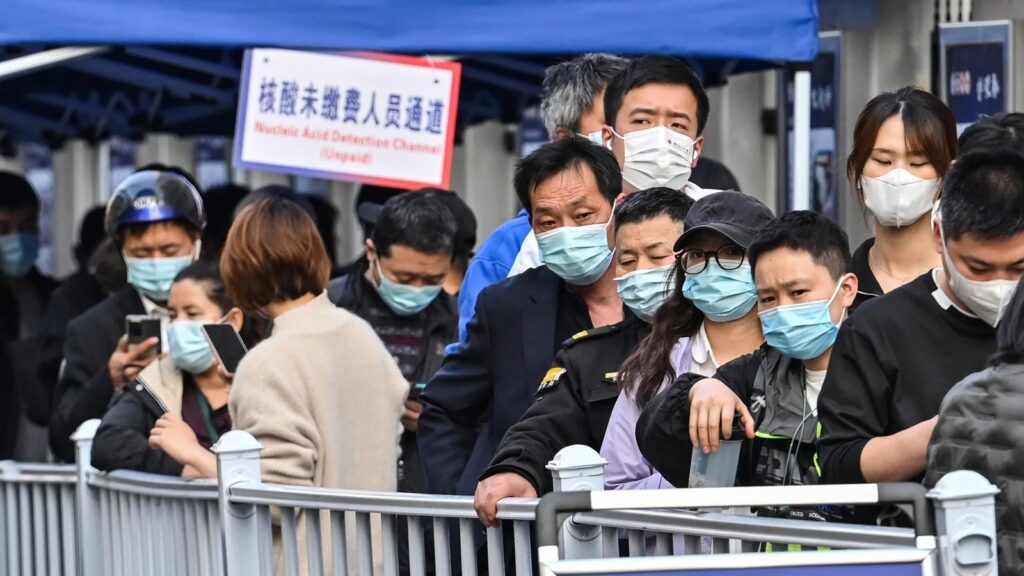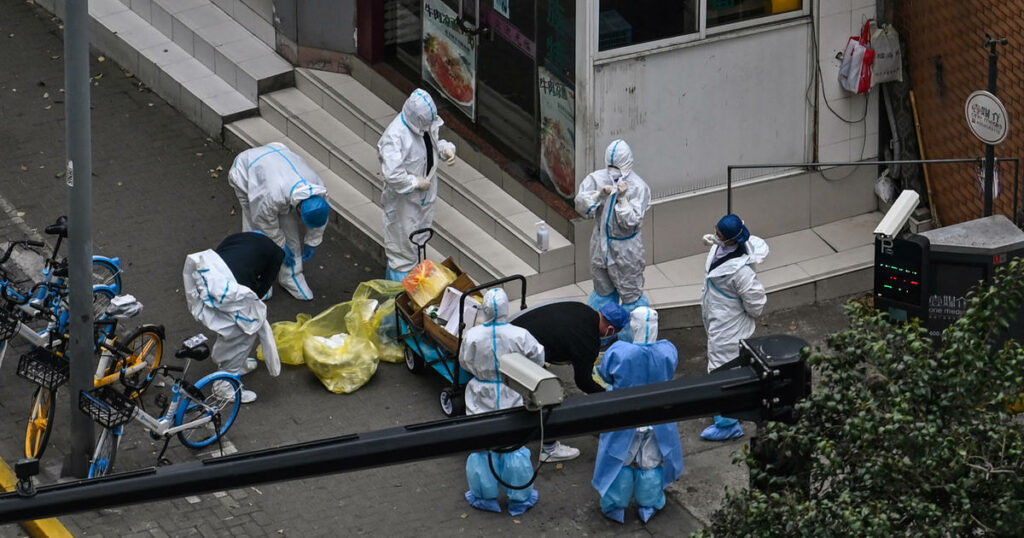
Shanghai has been plunged into an extended lockdown and some residents face some more days of isolation in their homes as China’s strict Zero-COVID policy threatens the country’s economy. Shanghai has put all its 26 million residents under lockdown in China’s biggest citywide imposition of the restrictions since the pandemic began as authorities admitted the difficulty in containing the fast-spreading Omicron variant. Currently, Shanghai’s epidemic prevention and control is at the most difficult and most critical stage, said Wu Qianyu, an official at the municipal health commission. Most of the medical staff have arrived in Shanghai by military planes and trains to help with the mass nucleic acid testing while others will help ease the burden on staff at makeshift hospitals. China dispatched similar teams to Hong Kong which is also battling a massive outbreak.
Experts and residents also believe that Shanghai’s situation is completely different from Wuhan two years ago, recognizing apparently improved diagnostic capacity and efficiency during the current wave, as well as more diversified, pragmatic and targeted treatment methods. Shanghai recorded another 13,354 cases. The vast majority of them are asymptomatic, bringing the city’s total to more than 73,000 since the last wave of infections began last month. A separate outbreak continues to range in the northeastern province of Jilin and the capital Beijing also saw an additional nine cases, just one of them asymptomatic. Many workers shut down an entire shopping centre in the city where a case had been detected. Shanghai has converted an exhibition hall and other facilities into massive isolation centres where people with mild or no symptoms are housed in a sea of separated beds by temporary partitions.
Despite those concerns and growing public frustration,China says it is sticking to its hardline “zero-tolerance” approach mandating lockdowns, mass testing and the compulsory isolation of all suspected cases and close contracts.
Failure of Zero-Covid strategy
Since the initial COVID19 outbreak in Wuhan in early 2020, China has seen its worst outbreak with daily recorded cases reaching over there. Numerous Chinese cities have been put under lockdown as a result of the outbreak. Faced with an increase of positive cases, the Chinese government has chosen to enforce its draconian Zero-COVID policy even more strictly. Vice premier Sun Chunlan, the chief coordinator of China’s COVID-19 response, announced during a state council meeting that China will maintain its Zero-COVID policy without hesitation. As a result, local authorities must approach the policy as “a primary political duty” and a national priority.
After two years of being a global COVID success story, China now appears to be struggling.The lockdown resulted in national outrage followed by grocery shortages. The case of a woman losing her unborn baby in her eighth month of pregnancy after being denied medical attention for hours has angered the citizens. Shanghai is China’s most populous city and its financial capital. Officers and factories are moving their staff into on-site bubbles, isolated from the outside world, so they can keep working. Succeed or fail, the Shanghai lockdowns show the utility of China’s Zero-COVID strategy is coming to an end. Photos of dozens of infants in cradles without their parents in a Shanghai clinic sparked anger on Chinese social media, where users call the government’s behavior “inhumane.” Parents said they were denied the right to accompany their children who had tested positive due to government rules, according to China’s Caixin publication.

After the public backlash against the separation of children and their guardians, Shanghai’s authorities tweaked the policy this week to allow a small number of parents with negative results to live with the kids in a quarantine hospital. As in previous lockdowns, people have failed to get life-saving medical care, such as a nurse who died from asthma. While Shanghai’s broader lockdown only came in last week, earlier spot lockdowns, or the so-called “closed-off” management style, mean some people have been under movement restrictions for two weeks.
Despite the painful measures, Shanghai reported 40,000 covid cases in March in total, making it the new epicenter of the virus in the country. It recorded more than 17,000 new cases on Tuesday, up from around 13,000 a day earlier. Last week, China’s National Health Commission said it was changing its rules so that mild cases would be isolated in centralised locations, rather than treated in hospitals. The criteria for a patient to be discharged from quarantine has also been lowered. During China’s recent National People’s Congress meeting, Chinese Premier Li Keqiang also said China would continue to make its Covid-19 response more “scientific and targeted”. Chinese epidemiologist Zhang Wenhong suggested that China should not be afraid to eventually move towards a more “sustainable coping strategy” in the future.
Effect on China’s Economy
Economic globalization has made the world smaller. However, the pandemic hit a vast number of economies hard with significantly delayed business recovery and damaged production networks. In the last few days, mainland China has seen its worst COVID outbreak since the initial height of the pandemic in early 2020 when the economy contracted. The latest surge in cases, which seems from the highly transmissible omicron variant, has forced some manufacturing hubs across the country to suspend or limit production. The most affected regions account for 16.7% of national GDP, according to Citi estimates.
In March, China’s manufacturing activity slumped to a two-year low due to covid disruptions with lost productivity from China’s patchwork of COVID lockdowns at nearly $50 billion a month. Strict border rules, including lengthy quarantines, have also halted China’s aviation and tourism industries, and been a blow to countries that depended on Chinese tourists before the pandemic. And while China maintains port operations are continuing as normal despite the lockdown, a supply chain tracking firm says ocean shipment volumes are reduced.
The analysts said “jointly considering the spillover effect of other regions, the lockdown and tightened quarantine measures this round could potentially deduct 0.5-0.8 ppt of GDP growth in Q1, assuming no policy responses. Beijing Zero-COVID policy measures have prompted analysts to issue reports about growing risks of drugs on the world’s second-largest economy, even if few are able to put a number on it yet. In the context of protectionism, the outbreak of COVID – 19 in China would cause a 2.2-3.09% drop in energy consumption, while adverse spillovers from global spread of COVID19 would reduce its GDP by 2.27-3.28% and energy consumption by 2.48-3.49%.
